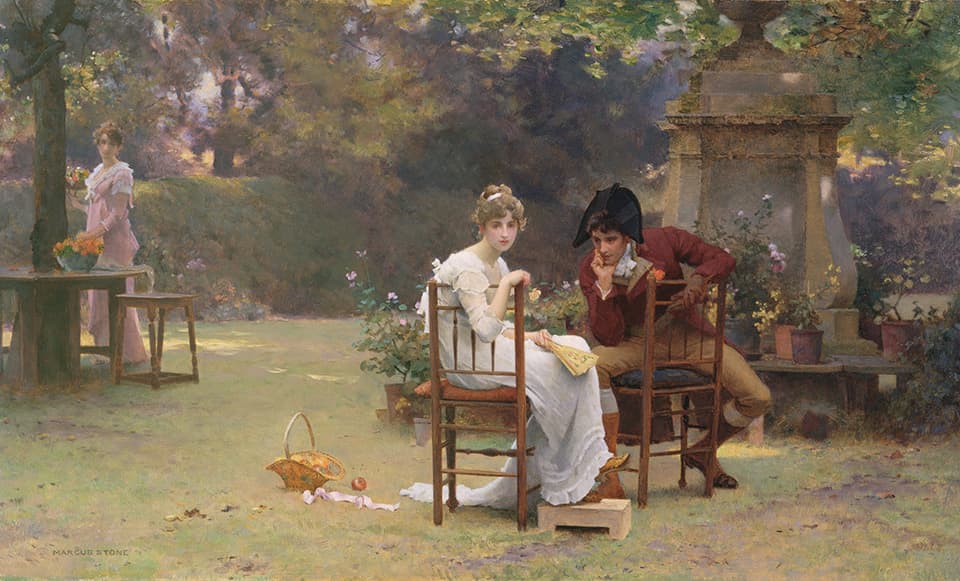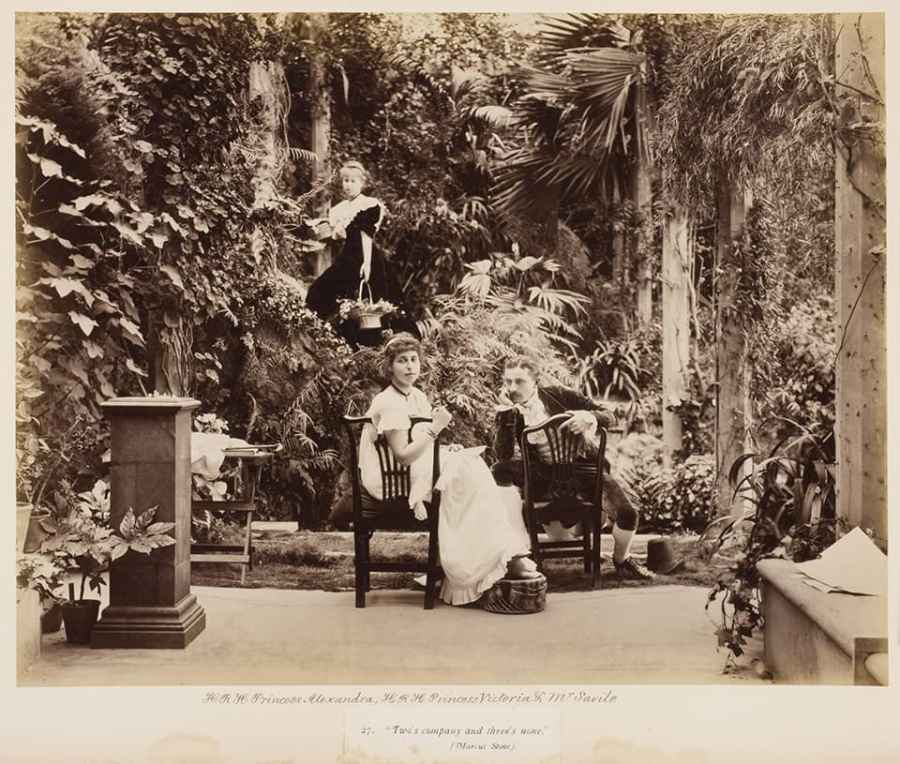HRH Princess Alexandra, HRH Princess Victoria & Mr Savile, ‘Two’s company and three’s none’ in
‘Tableaux Vivants Devonport’ c1892-1893, by unknown photographer [Courtesy, Wilson Centre for Photography]

Two’s Company, Three’s None 1892 by Marcus Stone [Courtesy, Manchester Art Gallery]
The exhibition, called Painting with Light: Art and Photography from the Pre-Raphaelites to the Modern Age, examines the ‘dynamic dialogue’ between British painters and photographers.
Spanning over 70 years and featuring more than 200 works, the show – which opens at Tate Britain in London on 11 May – includes the work of David Octavius Hill and Robert Adamson, whose work first explored movement and illumination.
Carol Jacobi, the museum’s curator of British Art 1850-1915, said: ‘Painting with Light offers new insights into Britain’s most popular artists and reveals just how vital painting and photography were to one another.
‘Their conversations were at the heart of the artistic achievements of the Victorian and Edwardian era.’
Highlights are expected to include examples of three-dimensional photography, where models and props were used to create dramatic tableaux from well-known artworks of the period.
The gallery adds: ‘Such stereographs were widely disseminated and made art more accessible to the public, often being used as a form of after-dinner entertainment for middle class Victorian families.
‘A previously unseen private album in which the royal family painstakingly re-enacted famous paintings is also exhibited, as well as rare examples of early colour photography.’
The exhibition also looks at the role of women photographers, such as Julia Margaret Cameron.
In a statement, Tate Britain added: ‘The dawn of photography coincided with a tide of revolutionary ideas in the arts, which questioned how pictures should be created and seen.
‘Photography adapted the Old Master traditions within which many photographers had been trained, and engaged with the radical naturalism of JMW Turner (1775-1851), the Pre-Raphaelites, and their Realist and Impressionist successors.
‘Turner inspired the first photographic panoramic views, and, in the years that followed his death, photographers and painters followed in his footsteps and composed novel landscapes evoking meaning and emotion.’








